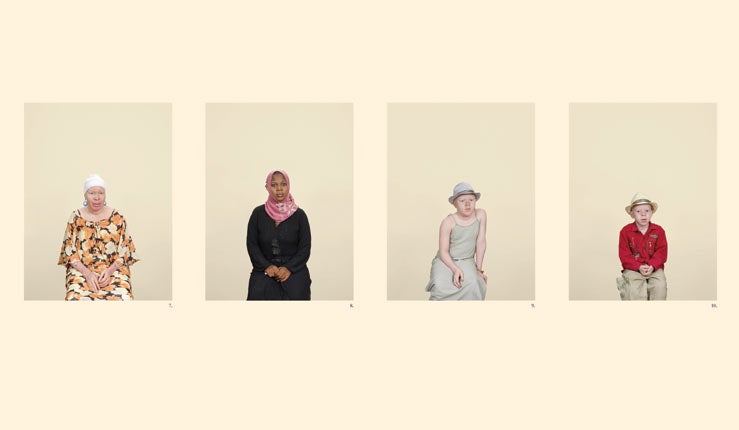
One night last week, art photography took a new, more serious direction. Not serious in the sense of moral or emotional forcefulness, because that's been part of photographic practice for decades – think of Lee Miller's poised war imagery of the 1940s, in which soldiers' corpses, half sunk in a bog, are rendered painfully beautiful. And not serious in terms of prices paid for limited-edition prints.
Sought-after snappers like Andreas Gursky, the German best-known for his pin-sharp studies of supermarket shelves, have been selling their glamorous prints for millions of pounds for several years, even after the recession. But now, a young female American photographer, Taryn Simon, is introducing another kind of gravity to a medium that long struggled to achieve equal status with painting and sculpture.
You wouldn't have guessed it from the scene at the private view for her new show at Tate Modern – a great honour for a relatively young photographer – which was as ritzy as any fashion party I've attended. Pushing through the crowd, I jostled Salman Rushdie, Gwyneth Paltrow, Ron Arad and Ruth Rogers. In the gallery, ignoring the art works, were Rob Lowe and three ladies in Louboutins, tittering at the tanned actor's every word. Nearby was Tilda Swinton, dressed in a slick black tuxedo, extending her slender neck to peer at the detailed accompanying texts on the gallery wall.
Taryn Simon and her husband Jake Paltrow, brother of Gwyneth, are an ultra-fashionable couple in New York. The first time I saw Simon's work, it was actually in the pages of a fashion magazine – she photographed ad campaigns for Stella McCartney's Chloe collections for several seasons. All reasons to suspect that her show might be an exercise in buffing the Tate's own image as London's hippest public art institution.
But this exhibition, called "A Living Man Declared Dead and Other Chapters", is anything but flimsy. The result of four years of fact checking and research, it is journalism hung on a gallery wall. Each work comprises a group of small, plain portraits of a single family that has been affected by persecution or war. The portraits are arranged as a family tree, with blank spaces left for family members who have been killed, or imprisoned, or for women who are not allowed to be photographed. Texts and pictures of relevant objects such as guns or bones complete the picture.
The stories Simon tells are about the horrific treatment of albinos in Tanzania; the victimisation of Spanish homosexuals under Franco's regime; the plight of people in rural India who find themselves officially declared dead – from which the show takes its title.
Rather than use dramatic images to create a narrative, as conventional documentary photography might, Simon gathers the "evidence" for each story and presents it dispassionately. The gallery-goer has to get in close, read the notes, piece together the work for herself. The photographs are neither glamorous nor particularly beautiful. But at a moment when media is fragmenting and the public demands to examine to unmediated evidence – leaked embassy cables, a photograph of Bin Laden's body – Simon has found a modern way to tell the world serious stories.
So good character trumps IQ. That's a relief
I enjoyed reading The Social Animal, David Brooks's new book about the human unconscious and the role it plays in determining how successful we are in life. Using the lifespan of two imaginary characters, Erica and Harold, Brooks has produced a sprawling but entertaining study of the latest academic research into "noncognitive skills", ie the qualities that can't be learned in school but are somehow transmitted between humans.
The ability to connect with others is the real secret to happiness and fulfilment, he argues. Middle-class Harold is shown to be given an intellectual advantage by the loving noises his mother makes to him as an infant; his actual effort in school only makes a cursory difference to his destiny. Brooks shows good character trumping high IQ, with street-smart Erica getting the better of her Vulcan-like male colleagues.
I'm pretty sure that the scientific studies employed by Brooks throughout this book are more nuanced than he allows, but nonetheless it's a reassuring read for anyone who, like me, believes that the best way to solve a problem isn't to stay up all night studying, but to sleep on it.
Brushes with hair disasters
Maintaining preposterously fabulous hair isn't just time-consuming – we learnt recently that Donald Trump spends an hour getting his ready each morning – but also highly risky. Stars famous for their hair are expected to look pristine at all times. I remember feeling quite disappointed to spot Graydon Carter in New York once, windswept by a city squall; I had thought his treble clef of white hair was immutable. It does mean there's hope for the more modestly bequiffed. Why else does one enjoy hearing that Debbie Harry, immaculately cool white-blonde siren, tell Kirsty Young that she suffered a home perm in her youth?
Join our commenting forum
Join thought-provoking conversations, follow other Independent readers and see their replies
Comments